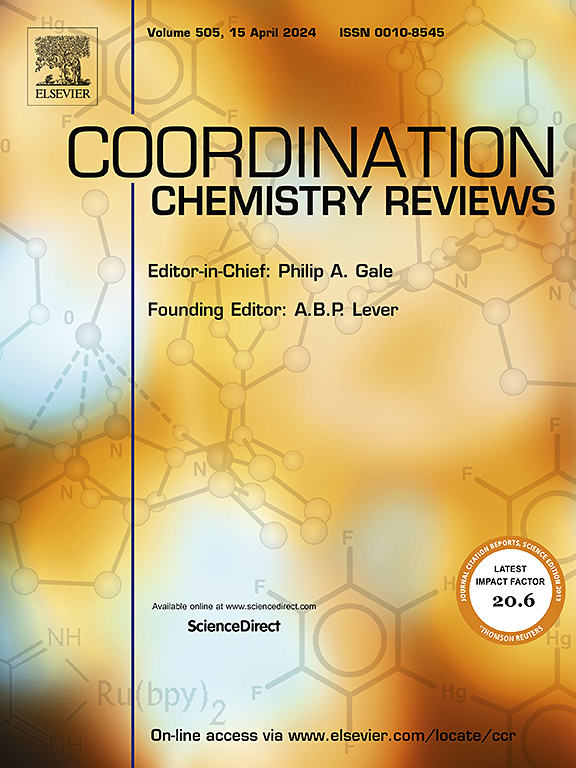Coupling nitric oxide photo-uncaging with radiotherapy
IF 20.3
1区 化学
Q1 CHEMISTRY, INORGANIC & NUCLEAR
引用次数: 0
Abstract
In this review we discuss some issues and problems with radiotherapy of disease states such as cancer. An important issue is that radiation induced tissue mortality is enhanced by the presence of oxygen, a feature that often leads to normoxic healthy tissues being more sensitive to high energy radiation than tumor tissues, which are often hypoxic. These properties lead to an interest in the delivery of radiation sensitizers to the targeted tissues, and a technique for doing so is photo-uncaging, which allows spatial-temporal control. One such radiation sensitizer is the small molecule bioregulator nitric oxide (NO), for which photo-uncaging has been demonstrated with a number of transition metal nitrosyl complexes. The review will explore potential approaches for photo-uncaging NO in targeted tissues, including the possible utilization of the therapeutic high energy radiation itself (“radio-uncaging”).

求助全文
约1分钟内获得全文
求助全文
来源期刊

Coordination Chemistry Reviews
化学-无机化学与核化学
CiteScore
34.30
自引率
5.30%
发文量
457
审稿时长
54 days
期刊介绍:
Coordination Chemistry Reviews offers rapid publication of review articles on current and significant topics in coordination chemistry, encompassing organometallic, supramolecular, theoretical, and bioinorganic chemistry. It also covers catalysis, materials chemistry, and metal-organic frameworks from a coordination chemistry perspective. Reviews summarize recent developments or discuss specific techniques, welcoming contributions from both established and emerging researchers.
The journal releases special issues on timely subjects, including those featuring contributions from specific regions or conferences. Occasional full-length book articles are also featured. Additionally, special volumes cover annual reviews of main group chemistry, transition metal group chemistry, and organometallic chemistry. These comprehensive reviews are vital resources for those engaged in coordination chemistry, further establishing Coordination Chemistry Reviews as a hub for insightful surveys in inorganic and physical inorganic chemistry.
 求助内容:
求助内容: 应助结果提醒方式:
应助结果提醒方式:


